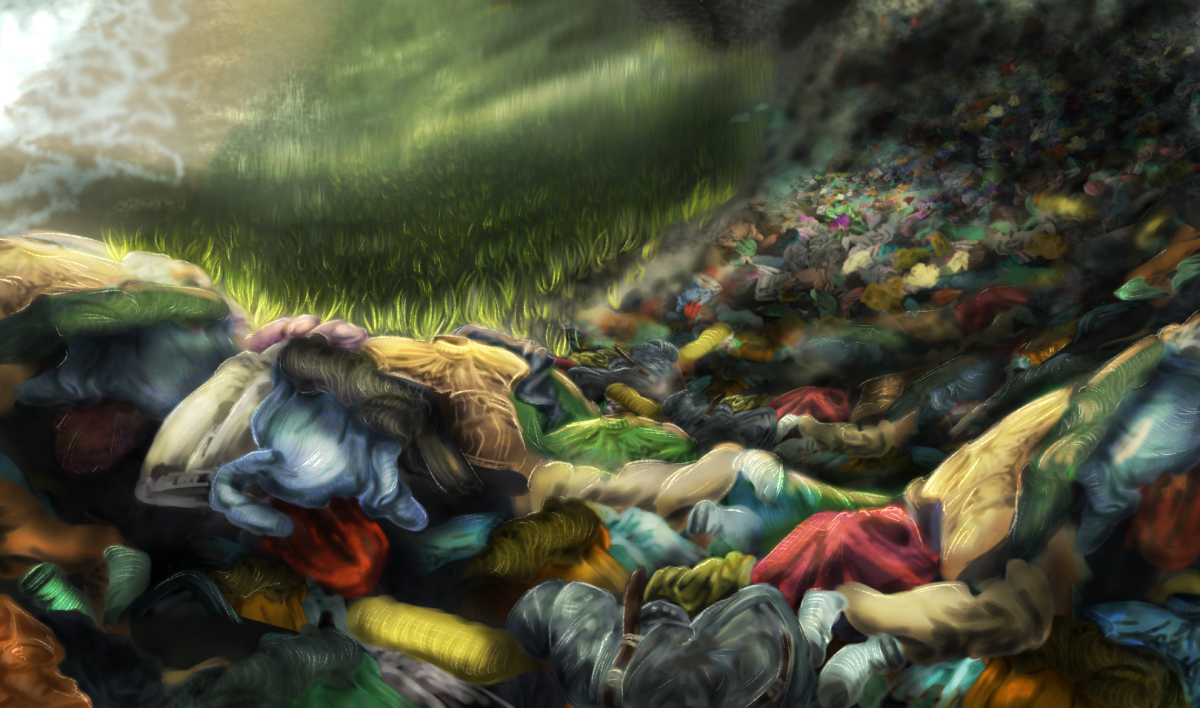That $5 T-shirt may have seemed like a bargain, but it fell apart after a single wash. Those jeans purchased from Shein might have cut costs, but lack quality. These products are examples of fast fashion, an industry that quickly produces inexpensive clothing in response to the latest trends.
What Is Fast Fashion?
Fast fashion has its roots in luxury fashion. Every season, designer fashion brands like Chanel host major fashion shows in the world’s fashion capitals, highlighting upcoming trends. Discounters — such as Target and H&M — mimic popular looks from these shows, mass-producing them in overseas factories and quickly distributing them at their stores.
For consumers, fast fashion makes otherwise luxurious fashion styles available and affordable. This contributes to economic growth by adding new manufacturing and retail jobs.
Jonathan Schroeder, the William A. Kern Professor in Communications and a professor of the Communicating Fashion course at RIT, discussed the convenience of fast fashion on college campuses.
“Not a lot of college students are going to be able to afford the big name brands, at least for every item of clothing they have, and so fast fashion might become an obvious alternative for them to buy,” Schroeder said.
Fast fashion has received criticism for fueling exploitative labor practices. Fast fashion companies often use child labor and pay extremely low wages to produce clothes in developing markets.
Fast fashion also hurts the environment, using fabrics made from harmful and resource-intensive fibers and dyes. According to the European Parliament, making a single cotton T-shirt uses an estimated 713 gallons of freshwater — equivalent to a single person’s water intake for two and a half years. Additionally, since clothing is often produced overseas, it must be shipped to the U.S., resulting in increased carbon emissions.
Fast fashion encourages overconsumption by promoting short-lived trends, causing clothes to fall out of trend quickly and increasing waste. Since most unused clothing ends up in a landfill — often taking dozens of years to decompose — this exacerbates methane emissions and releases toxic chemicals into the earth.
Fast Fashion on Campus
According to Forbes, 72% of college students bought fast fashion in 2022. But despite its widespread popularity, many students hold critical views of the industry.
“It’s a harmful industry for the environment and workers, but in a heavy consumption environment, it becomes very difficult to avoid,” said Ava Koh, a first-year physician assistant major.
Oliwia Szymanska, a first-year museum studies major, expressed that the fast fashion industry’s vices are not a result of consumer choice; rather, they reflect a broader issue of corporate and societal greed.
“It’s horrible, but I don’t think consumers should be blamed, as it’s our society’s, government’s and big corporations’ fault,” Szymanska shared.
Szymanska also reflected on her decision to purchase clothes made from sustainable fabric.
“I definitely don’t buy as much clothes as I used to — and now I try to buy clothes that will last for years by looking at what material it’s made of, instead of just buying cheap polyester that will be ruined after a few washes,” Szymanska said.
Knowing what clothes are made of can help consumers differentiate between sustainable clothing and cheaply made ones that harm the environment. Materials like polyester, spandex and conventional cotton are best avoided because they are not biodegradable and produce microplastics that harm the food chain. On the other hand, organic cotton, linen, hemp and wool are typically better for the environment and are long-lasting.
Sustainable Clothing Options
Because of how cheap and readily available it is, fast fashion may seem unavoidable. This can make it daunting to seek other affordable forms of clothing. E. Turpin, a program specialist for Sustainability & Strategic Planning at RIT, provided some alternatives to fast fashion in the Rochester area.
“Goodwill FLX has many stores in the region and has a $1 deal every Sunday. There is also a clearance center where you pay by weight and is very cost-effective,” Turpin suggested, also referencing Savers and AMVETS for different clothing and shoe options.
Rochester is also home to secondhand clothing and vintage stores that repurpose existing clothing. For secondhand stores, options include Kiaks and Greenovation. For vintage clothing, stores include the Op Shop and Little Shop of Hoarders, or one can thrift from vendors at the Lucky Flea Market. Additionally, online companies like ThredUp and Nuuly act as thrift and rent stores, respectively.
Located on the RIT campus is GoodBye GoodBuy, a college thrifting center. During finals and move-out week, GoodBye GoodBuy will accept donations; it then opens up a shop during move-in week in August. Collection bins will be made available near RIT Housing. This is a convenient way for students to repurpose items they no longer need.
Ultimately, fast fashion poses serious environmental risks by promoting overconsumption. While students can advocate limiting the production of wasteful clothing and promoting environmentally conscious alternatives, a broader conversation is needed — one that calls out the fashion brands profiting from unsafe labor and environmental practices and urges them to pursue more responsible production.







